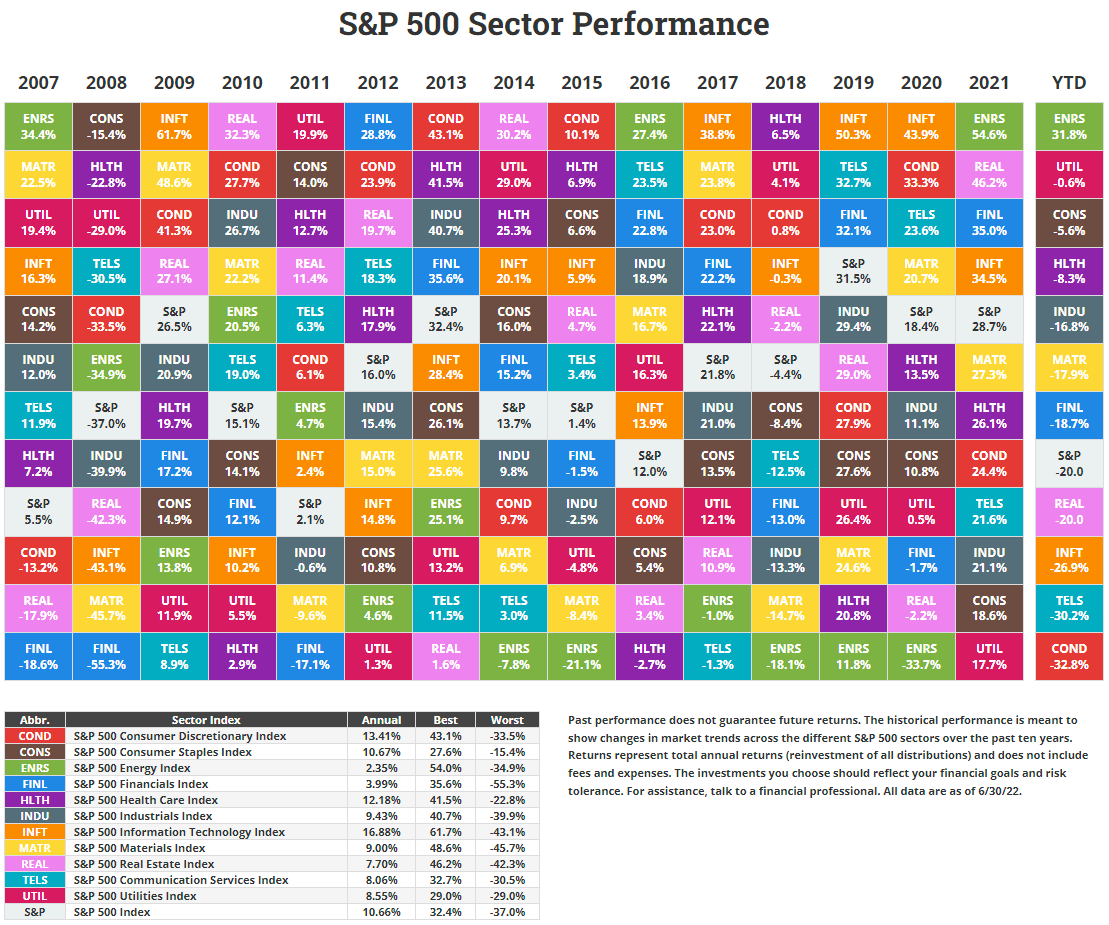As every day passes, we get more bad data coming out from various sources. Target recently announced a 90% drop in profits, missed earnings and warned of sluggishness in the economy. We also told you about the dire predictions in real estate from Reventure Consultants. All this bad news begs a question, where to park money during a coming recession?
We’ve been asking this question ourselves and while we’ve been very strategic about our dividend stock portfolio, we wanted to take a more holistic look. We came across this interesting colorful chart which shows which S&P 500 Sector Performance.
 Source: novelinvestor.com
Source: novelinvestor.com
According to the St. Louis Fed, the last long recession began in Q4 2007 and ended Q3 2009, about two years. Looking at the chart, we wanted to know what sectors declined the least during the two year recession window. The initial safe haven in 2008 was consumer staples which makes sense because people will need to buy basic necessities whether there is a recession or not. In 2009, information technology was the best performer followed by real estate in 2010.
Out of curiosity we took a look at the S&P 500 Sector Performance for August 17 and mapped it to the 2007-2009 recession and the top four categories matched very well.

We are in the early stages of a recession and while the current drops are minor they do correlate with Consumer Staples, Health Care, Utilities and Materials very highly. Every recession is different often triggered by different conditions which is why there is little correlation with the pandemic recession. In the 2020 recession, the pandemic forced people home and many companies invested in technology to allow workers to work remotely from home. Additionally, lock downs caused energy to collapse since everyone was locked down at home in many parts of the world. In 2020, real estate barely budged as did financials since the world was in limbo.
We think the 2008 recession is a better proxy for the 2022-202? recession and so far the current trends are very similar. It gives us better confidence that the value dividend stocks we have been buying have been the right move. It is important to note that stocks WILL decline during a recession but some will decline less than others and it’s important to have additional income to fight that high inflation rate.

Looking at a chart of the Federal Reserve Fed Funds rate it is easy to see why real estate boomed in 2010 because Fed fund rates essentially dropped to a very low level and stayed there for a long time.
This led to very low mortgage rates:

While real estate wasn’t always the number 1 safe haven, it was in the top 4 from 2009 thru 2014 except 2013.
We will dig deeper into the S&P chart, the Fed funds rate and other economic data and analyze opportunities for investments. In the meantime, stay tuned and stay solvent…